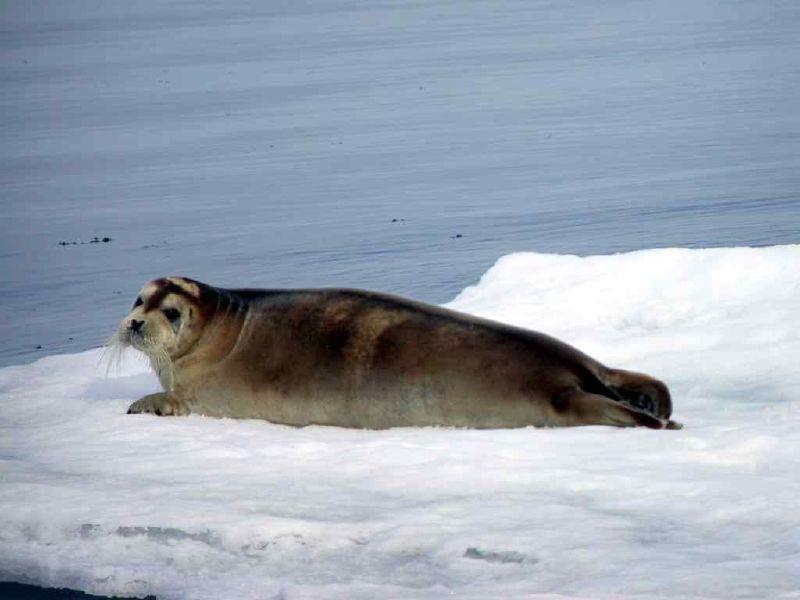Wildlife North America . com North American Animals - mamals, birds, reptiles, insects |
Bearded Seal (Erignathus barbatus)
Bearded Seal photographed at Svalberg, Spitzbergen Photograph by Alistair Rae. Some rights reserved. (view image details)
BEARDED SEAL FACTS
DescriptionThe Bearded Seal lives in the arctic near pack ice. It is gray or brown, with darker back and paler underside. They have a large, wide muzzle with long white whiskers, and small close set eyes. The flippers have digits of almost equal length, giving the flipper a square appearance. Pups are similar in color to adults but have a lighter face and light colored stripes on the back. Other Names Squareflipper Size length 2 - 2.6m Environment shallow arctic waters where there is moving ice and open water less than 150-200 m deep Food many species of fish, crustaceans, and molluscs. Small fish are swallowed whole underwater. Large fish are eaten on the surface, held in the flippers.. Breeding Pup is born after gestation period of 11 months. Bearded seals give birth on pack ice in mid-March to late April. The pups can swim shortly after birth and can dive to escape polar bears. Pups are weaned after 12 -18 days, by which time they have grown to about 85kg. Pups molt into the adult coat around the time of weaning. Range north Pacific and north Atlantic Notes Bearded seals are hunted for their hides and are also eaten by people who live in the arctic. The Polar Bear is the main predator of Bearded Seals. Classification
Home | Mammals | Reptiles | Birds | Insects | Privacy Policy | Disclaimer | Contact Us |